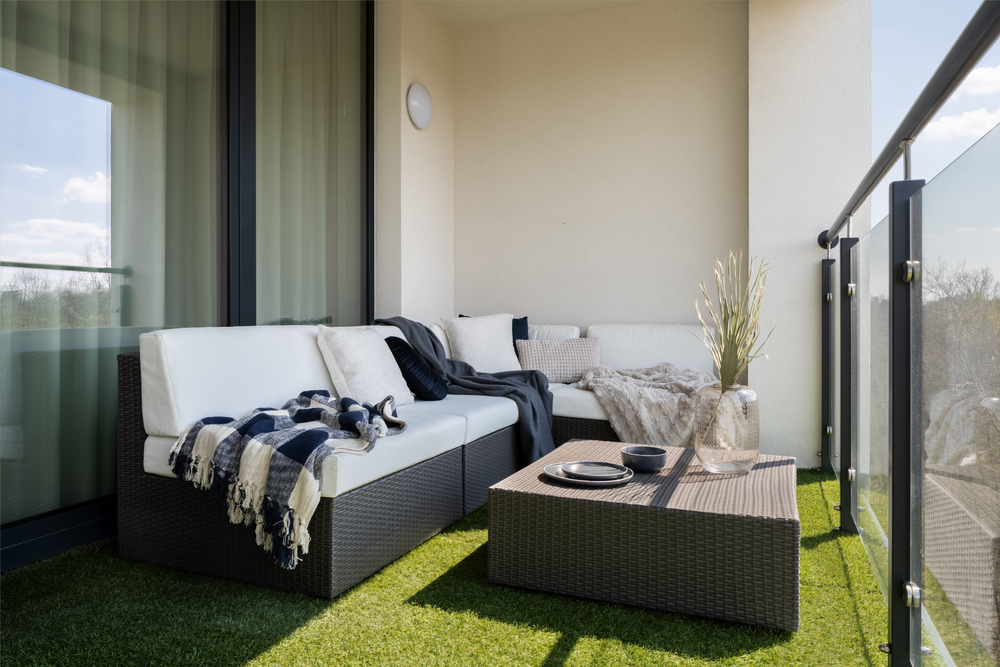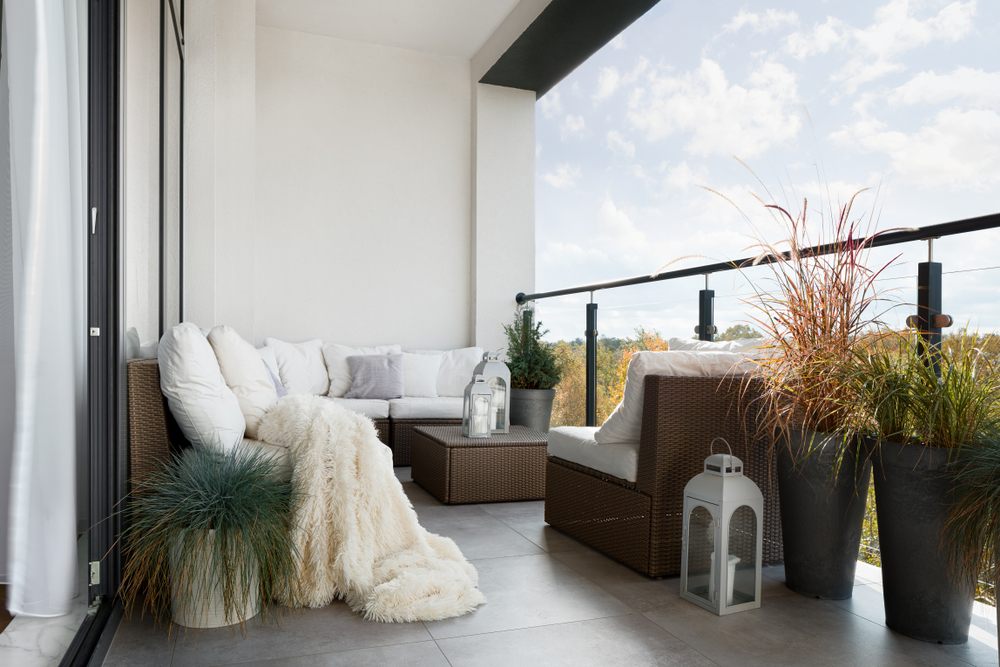The Ultimate Guide to Glass Balustrades: Style, Safety, and Upkeep for Homes
August 15, 2025

Products
balustrading
.webp)

locks and latches
.webp)

security and privacy
.webp)

Glass balustrades have become a hallmark of modern home design, offering a perfect balance of safety, elegance, and open views. Whether used to enclose balconies, staircases, or pool areas, they create a light, unobtrusive barrier that enhances both indoor and outdoor spaces. For homeowners, especially those seeking glass balustrades Sydney experts can supply and install, the appeal lies in their ability to complement virtually any architectural style while meeting stringent safety requirements.
The right glass balustrade can transform a space, adding value and visual impact without compromising on durability. Advances in materials and fittings mean these structures can stand up to Australia’s varying climates, including the challenges of coastal conditions. In this guide, we will explore how to choose the perfect glass balustrade for your home, design it for maximum style and function, maintain its clarity and strength over time, and ensure it meets all relevant safety standards.

Selecting the right glass balustrade involves more than picking a style you like. It is about balancing design preferences with safety requirements, durability, and how the structure will function in your space. The decision should take into account the purpose of the balustrade, whether it will be exposed to the elements, and how it will integrate with the surrounding architecture.
Frameless glass balustrades are the ultimate in minimalist design, offering uninterrupted views and a sleek, modern look. The panels are fixed using discreet spigots, channels, or stand-off fittings, creating the illusion that the glass is floating. This style works particularly well in spaces where you want to maximise light and visibility, such as waterfront balconies or pool surrounds. The clean lines make them a popular choice for contemporary homes, although they often require a larger budget due to the precision engineering involved.
Semi-frameless glass balustrades strike a balance between minimalism and cost-effectiveness. These systems use slimline posts or frames to hold the glass panels in place, which can slightly interrupt the view but offer added structural support. They can be an excellent option for high-traffic areas or homes in more exposed locations, as the frame provides additional protection for the glass edges. The choice between frameless and semi-frameless often comes down to budget, desired aesthetics, and the specific conditions of your property.
The performance and safety of any glass balustrade depend heavily on the materials used. Toughened safety glass is the industry standard, as it is up to five times stronger than regular glass and, if broken, shatters into small blunt fragments rather than sharp shards. For most residential applications, panels are 10 to 12 millimetres thick, with thicker glass required for higher wind loads or structural spans.
Equally important are the fittings and fixings that hold the panels in place. In coastal environments like much of Sydney, marine-grade stainless steel (typically 316 grade) is preferred because it resists corrosion from salt air. Choosing high-quality hardware not only extends the life of the installation but also reduces maintenance and ensures the structure remains safe over time. Poor-quality fittings may corrode or weaken, compromising the integrity of the balustrade.
A glass balustrade should do more than meet safety codes. It should also enhance the overall look and feel of your home while serving a functional purpose. The best designs take into account how the balustrade will be used, how it will connect with its surroundings, and how it can add to the property’s value.
Indoors, glass balustrades are often used for staircases and mezzanine levels, where they create an open, airy atmosphere and allow natural light to flow through the home. They can also act as a modern design feature, replacing traditional timber or metal railings with something sleek and understated. Using clear glass can make smaller spaces feel larger, while frosted or tinted glass can offer added privacy where needed.
Outdoors, glass balustrades are ideal for balconies, verandas, and decks, where maintaining the view is a priority. They allow you to enjoy your surroundings without visual barriers and can help protect the area from wind while keeping the space feeling open. The design should take into account exposure to the elements, with appropriate glass thickness and hardware to ensure durability in sun, rain, and wind.
The style of your glass balustrade should complement your home’s architecture rather than compete with it. For a modern home, frameless glass with stainless steel fittings can enhance clean lines and contemporary finishes. For more traditional or coastal properties, a semi-frameless design with coloured powder-coated posts may blend better with existing features.
Colour choices for any frames or fittings can also impact the overall look. Neutral tones such as black, white, or metallic finishes tend to be timeless, while custom colours can tie the balustrade into other exterior or interior elements like window frames, decking, or roofing. Choosing materials and finishes that match or complement your existing design scheme helps create a cohesive look that feels intentional.

Sydney’s coastal climate can be tough on building materials, and glass balustrades are no exception. Salt-laden air, humidity, and strong sunlight can all affect the clarity of the glass and the longevity of fittings. Regular care is essential not only for appearance but also for ensuring the structure remains safe and compliant over time.
Keeping glass panels clean is the key to maintaining their sleek, transparent look. A mild detergent mixed with warm water is usually all that is needed for regular cleaning. Apply the solution with a soft sponge or microfibre cloth, then rinse thoroughly with fresh water and dry with a lint-free cloth to avoid streaks.
For homes close to the ocean, cleaning may need to be done more frequently to prevent salt build-up, which can leave cloudy marks and cause etching on the glass over time. Avoid abrasive pads, harsh chemicals, or high-pressure cleaners, as these can scratch the glass or damage seals. A professional glass cleaner can also be used periodically to remove stubborn marks and keep panels looking pristine.
The hardware and fixings that hold your glass balustrade in place are just as important to maintain as the glass itself. In coastal environments, marine-grade stainless steel fittings should be regularly washed with fresh water to remove salt deposits and reduce the risk of corrosion. Even with high-quality fittings, periodic inspections are essential to check for signs of rust, pitting, or loose components.
Silicone seals and rubber gaskets can degrade over time due to UV exposure, so these should also be checked and replaced when necessary. Any movement or instability in the panels should be addressed immediately, as it can compromise the safety and compliance of the entire installation. Scheduling a professional inspection every few years can help identify and fix potential issues before they become costly repairs.
Glass balustrades are not just a design choice, they are also a safety feature that must meet strict building codes in New South Wales. These standards are in place to protect residents and visitors, ensuring that the balustrade can withstand daily use, weather exposure, and the forces that might be applied in an accident. Homeowners should be aware of these requirements from the planning stage to avoid costly changes later.
In NSW, the Building Code of Australia (BCA) specifies minimum heights for balustrades depending on their location. For balconies, decks, and verandas more than one metre above the ground, the balustrade must be at least one metre high. For staircases, the minimum height is 865 millimetres above the nosing of the stair tread.
Glass panels must be made from toughened or laminated safety glass that meets Australian Standards (AS 1288 and AS/NZS 2208). They must also be able to withstand specified horizontal and vertical loads without breaking or becoming dislodged. The fixings and supports, whether spigots, channels, or posts, must be designed to handle these loads and installed according to manufacturer specifications.
One of the most common compliance issues is using glass that does not meet the required thickness or strength for its application. This can happen when cheaper, non-compliant products are sourced or when incorrect specifications are followed during installation. Another frequent problem is incorrect spacing or insecure fixing of panels, which can compromise the structural integrity of the balustrade.
To avoid these issues, work with licensed and experienced installers who understand both the aesthetic and technical aspects of glass balustrade construction. Request documentation showing that all materials meet Australian Standards, and keep records of compliance for future reference, particularly if you plan to sell your home. Regular inspections and maintenance will also help ensure the balustrade remains safe and compliant over its lifespan.
Glass balustrades are one of the most versatile and visually striking additions you can make to a home. They provide safety without blocking light or views, and when chosen carefully, they complement both modern and traditional architectural styles. By understanding the different styles, materials, and design options available, you can select a balustrade that enhances your space while fitting your budget and lifestyle needs.
For homeowners seeking glass balustrades in Sydney, quality installation and ongoing maintenance are key to ensuring both safety and long-term appeal. Regular cleaning, corrosion prevention, and compliance with NSW standards will protect your investment and keep your balustrade looking its best for years to come. With the right combination of design, durability, and care, a glass balustrade can elevate the style, safety, and value of your property.